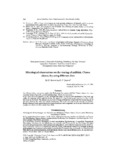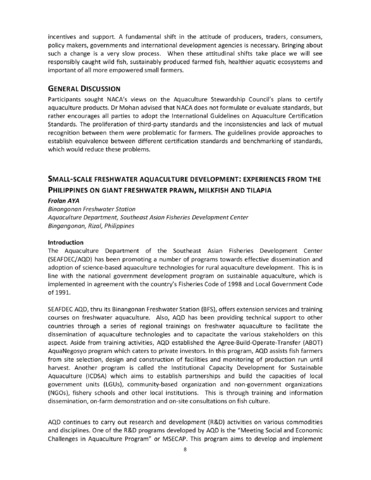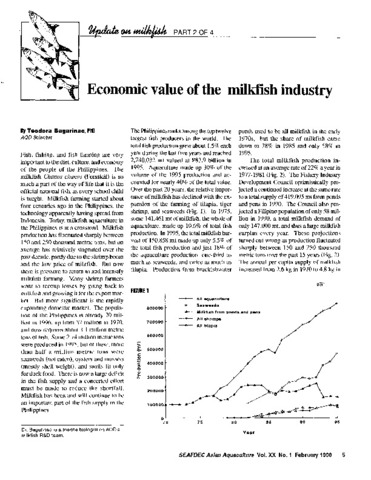Histological observations on the rearing of milkfish, Chanos chanos, fry using different diets
Share
စိတ္တဇ
Six different diets, commonly used in the Philippines for rearing milkfish, Chanos chanos, try, were tested by means of growth, survival and histology. These diets included:
a) live food (Artemia nauplii); b) two different dry feeds; c) natural feed supplements (rice bran, egg yolk); d) a mixture of live and dry feeds. The mixed diet was found to give the best results, closely followed by live food. The dietary value of one of both artificial feeds improved with increasing age of the fish, whereas the other was clearly inadequate. The same was true for the natural compounds. Results obtained from statistical and histological analyses were congruent; the latter provided additional insights not obtained with statistic data alone.
Suggested Citation
Segner, H., & Juario, J. V. (1986). Histological observations on the rearing of milkfish, Chanos chanos, fry using different diets. Journal of Applied Ichthyology , 2(4), 162-172. https://doi.org/10.1111/j.1439-0426.1986.tb00658.x
ဘာသာရပ်
Taxonomic term
စုစည်းမှုများ စုစည်းမှုများ
- AQD Journal Articles [1249]
Related items
Showing items related by title, author, creator and subject.
-
Small-scale freshwater aquaculture development: Experiences from the Philippines on giant freshwater prawn, milkfish and tilapia
Aya, Frolan (Japan International Cooperation Agency, 2013-12)The Aquaculture Department of the Southeast Asian Fisheries Development Center (SEAFDEC/AQD) has been promoting a number of programs towards effective dissemination and adoption of science-based aquaculture technologies ... -
Economic value of the milkfish industry
Bagarinao, Teodora (Aquaculture Department, Southeast Asian Fisheries Development Center, 1998)A brief description is given of the milkfish (Chanos chanos) farming industry in the Philippines. Over the past 20 years, the relative importance of milkfish has declined with the expansion of tilapia, tiger shrimp and ... -
Milkfish ponds from mangroves
Bagarinao, Teodora (Aquaculture Department, Southeast Asian Fisheries Development Center, 1998)




